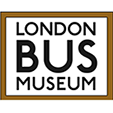|
|||||||||||
The RFW coaches
By 1951, with the Festival of Britain looming, London Transport badly needed to replace its pre-war fleet of private-hire coaches. It had decided to standardise on the new, underfloor-engined AEC Regal IV for its single-deck fleet and the first 25 of these RF-types were therefore designated for private hire and sightseeing purposes. However, in 1950, the Ministry of Transport had authorised new, larger dimensions for single-deckers, which could now be up to 30ft (9.1m) long and 8ft (2.4m) wide and, although this relaxation came too late to change the design of the RF-types, it gave LT the opportunity to order some larger private-hire vehicles as well.
LT therefore placed an order for 15 8ft-wide Regal IVs and gave the bodywork order to Eastern Coachworks of Lowestoft, the recently nationalised bodybuilder which the rest of the nationalised bus industry was encouraged to use. These coaches were mechanically very similar to LT’s standard RF-type and were given the designation ‘RFW’, meaning ‘RF Wide’. However, the bodies were entirely different from the RFs and were quite unlike anything normally favoured by LT.
The fifteen RFW coaches had 39-seat bodies with six full-drop winding windows on each side, two sliding sunshine-roof sections and six glass panels (so-called Alpine Lights) in the curved, cove sections of the roof. They had an outward -opening, hinged entrance door. The RFWs were painted in a livery of Lincoln green with grey roofs and had polished aluminium trim with red plastic inserts along the sides and rear, with narrow strips of similar material around the wheel arches and along the bottom of the side, rear and front panels. The “London Transport” fleet-name was in red instead of the gold used on most the fleet. The radiator filler cap was concealed by a cast-aluminium hinged cover with an LT bullseye motif in the same manner as the RF types.
An unusual feature of the RFW was the step unit under the floor behind the emergency exit; when the emergency exit door is opened, a rod connected to the door pulls the step unit out to enable passenger egress on the (British) off-side. Presumably this was intended for European Continental tours although this facility was rarely, if ever, used.
After withdrawal by LT, ten of the RFW coaches were exported to Ceylon, now Sri Lanka, and one to Eire. Of the four that remained in Britain, two survived to be preserved by enthusiasts.
RFW 6
RFW6 was was used by LT for private hire and tours work from May 1951 until withdrawal in October 1964. Operations included the famous Round London Sightseeing Tour. Like most of the RFW fleet, RFW6 was only licensed in the tourist season, being de-licensed and stored during the winter. The coach spent much of its life at Romford Country Area garage although it also had short spells attached to garages in the Central Area such as Putney, Victoria and New Cross.
RFW6 was the last of its type in service in London and one of the four to be sold for further use in the UK. After leaving LT, it was used as staff transport by a number of organisations, including St Thomas’ Hospital, London, until acquired for private preservation in 1974. It passed through the hands of a number of owners before being purchased by the Museum in 2009.
| Chassis: | AEC Regal Mark IV |
| Body: | Eastern Coachworks, 39 seats, front entrance, underfloor engine. |
| Engine: | AEC A219 9.6 litre diesel (horizontal), with air operated pre-selector gearbox. |
| Vehicle classification: | RFW, standing for Regal Four Wide |
| Date into service: | 1951 |
| Date of withdrawal: | 1964 |

